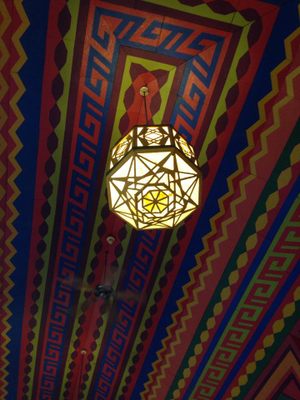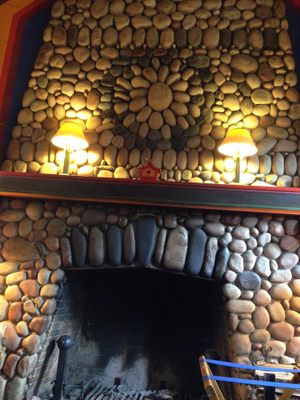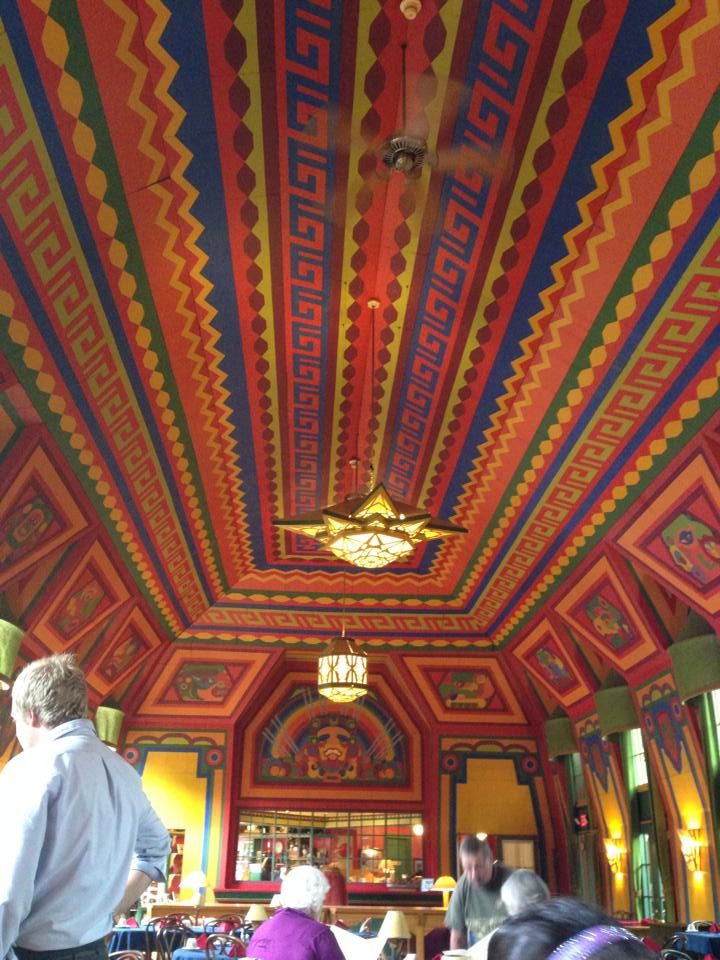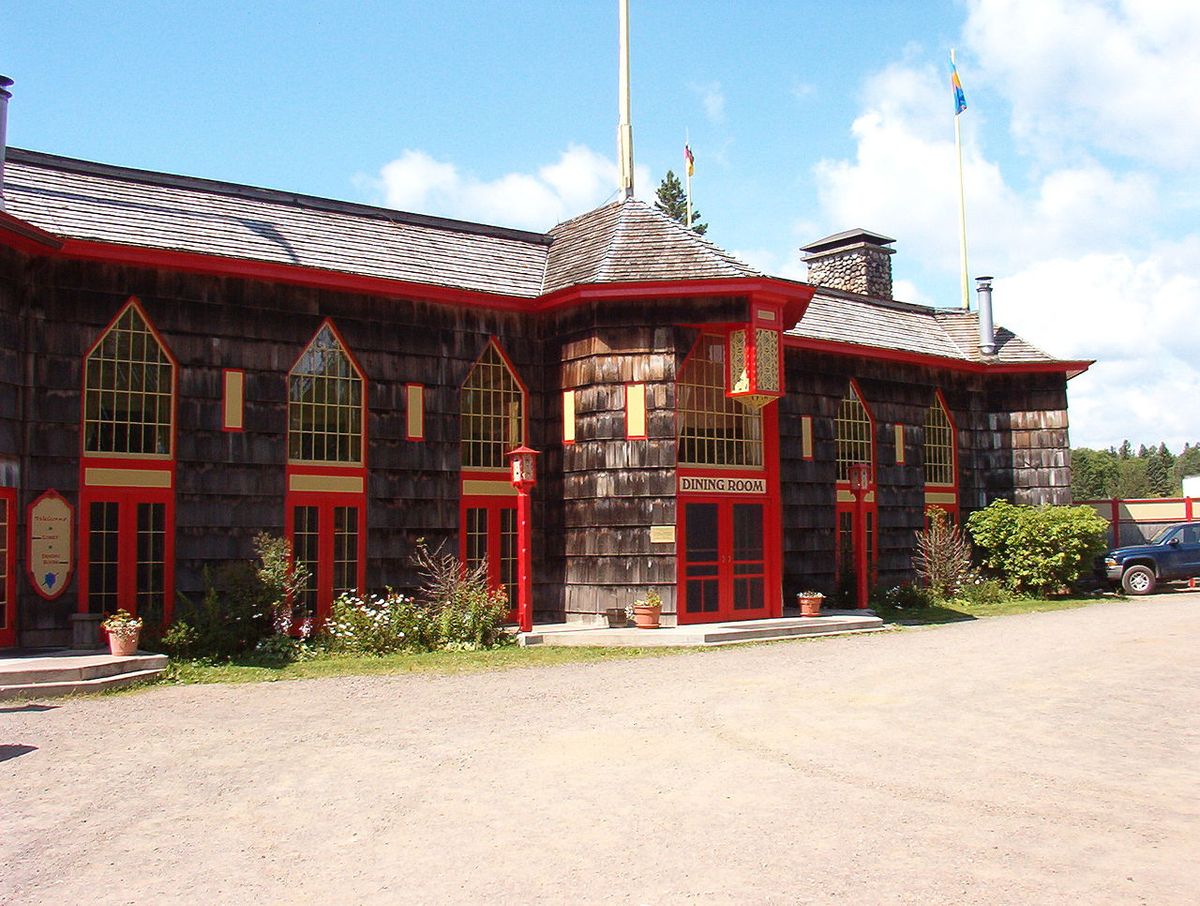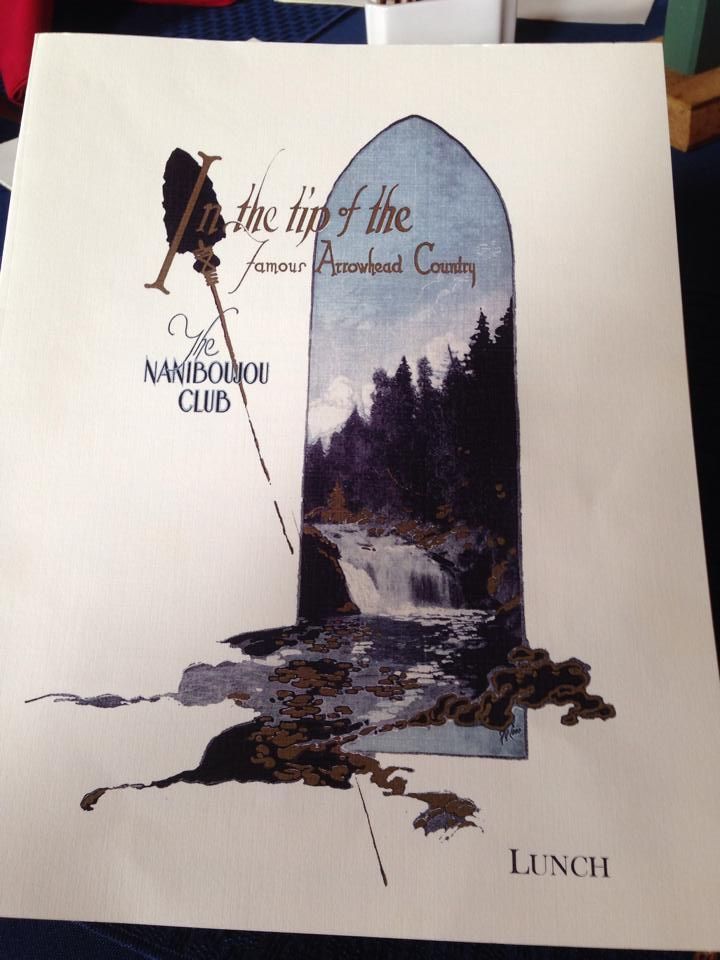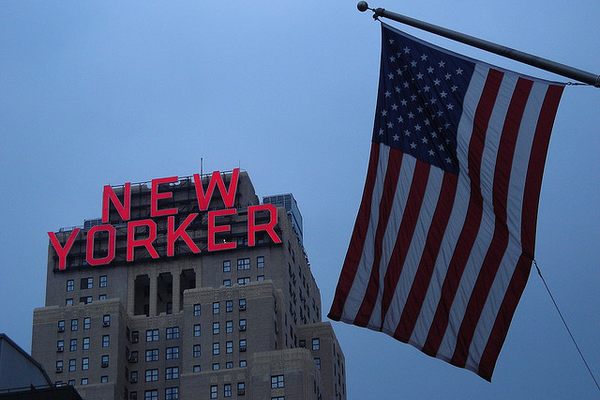About
Nestled in the forests of Lake Superior's North Shore near the town of Grand Marais, Minnesota, the Naniboujou Lodge may seem at first glance to be a typical northwoods resort, with its cedar-shingled exterior and its paned windows looking out on the icy Great Lake. But its dazzling interior puts it in a class of its own, and speaks to the building's unique origins.
Upon entering, visitors to Naniboujou are greeted by a psychedelic rainbow explosion in the lodge's dining room. Yet the building is not a product of the 1970s, nor was the interior decoration inspired by any mind-altering substances (presumably, anyway). The murals on the walls and ceilings of the Naniboujou Lodge reflect an Art Deco style influenced by native Cree design elements, and have remained unchanged since the establishment opened at the end of the Roaring Twenties.
Naniboujou Lodge started out as the clubhouse of a members-only retreat founded by a a group of wealthy Duluth businessmen, who saw potential in the area as an exclusive sportsman's paradise. They named their private club after Nanabozho, a trickster spirit and culture hero of the Ojibwe tribe who also appeared in Cree mythology. A ninety-nine year lease was taken out on a 3330-acre parcel of land, and the ground was broken officially in March of 1928.Plans for the well-heeled hunting and fishing club included a marina, an inland hunting lodge, a swimming pool, a bath house, a golf course, and tennis courts. Membership was to be tightly controlled, being available only to the prominent and well-connected; any applicant could be blackballed by only two dissenting votes from the 24-member board. Memberships were sold for $200 (roughly $2,773 in 2016) or more. To limit crowding and encourage a national profile, Minnesota residents could only comprise of 25% of the club. Free memberships were given Jazz Age celebrities such as Babe Ruth, Jack Dempsey, and Ring Lardner. When the club officially opened in 1929, it was to enormous fanfare. Visitors then and now were stunned and delighted by the clubhouse's 30-by-80-foot Great Hall (now the dining room of the lodge), its walls and vaulted ceiling adorned with the aforementioned murals by French artist Antoine Goufee. The room also featured a twelve-foot, 200-ton fireplace made entirely of native stone (purportedly the largest such fireplace in Minnesota to this day).
However, 1929 proved to be an inauspicious year for opening a expensive, elitist private club. The stock market crashed in October, sending the nation spiraling into the Great Depression, and thus draining the club's members of most of their wealth. Lacking any public participation or support, the club struggled to remain solvent and foreclosed in 1935, having only built one small portion of the grand plan: the initial clubhouse, which still stands today.
The property changed hands several times over the course of the next few decades, with the clubhouse being repurposed first as a hotel, then as a family-run resort lodge. Throughout these changes of ownership, however, care was taken to retain the building's original elegance and alluring design, ultimately leading to its inclusion in the National Register of Historical Places in 1982. The current owners of the Naniboujou Lodge took over the property in 1985 and run the property as a refuge and a place of peace and reflection — just as the original builders had intended, except open to the public.
Related Tags
Know Before You Go
Naniboujou Lodge is located off of Minnesota's famous Highway 61 in the Judge C. R. Magney State Park, 15 miles east of Grand Marais. It is open to visitors from May to October.
Published
April 20, 2016
Sources
- http://www.startribune.com/the-spirit-of-naniboujou/19574174/?location_refer=%24sectionName
- http://midwestweekends.com/plan_a_trip/stay/lodges_resorts/naniboujou_lodge_minnesota.html
- https://en.wikipedia.org/wiki/Naniboujou_Club_Lodge
- http://www.uniquelyminnesota.com/lodging/naniboujou-lodge-north-shore-mn.htm
- http://www.exploreminnesota.com/places-to-stay/1514/the-naniboujou-lodge


